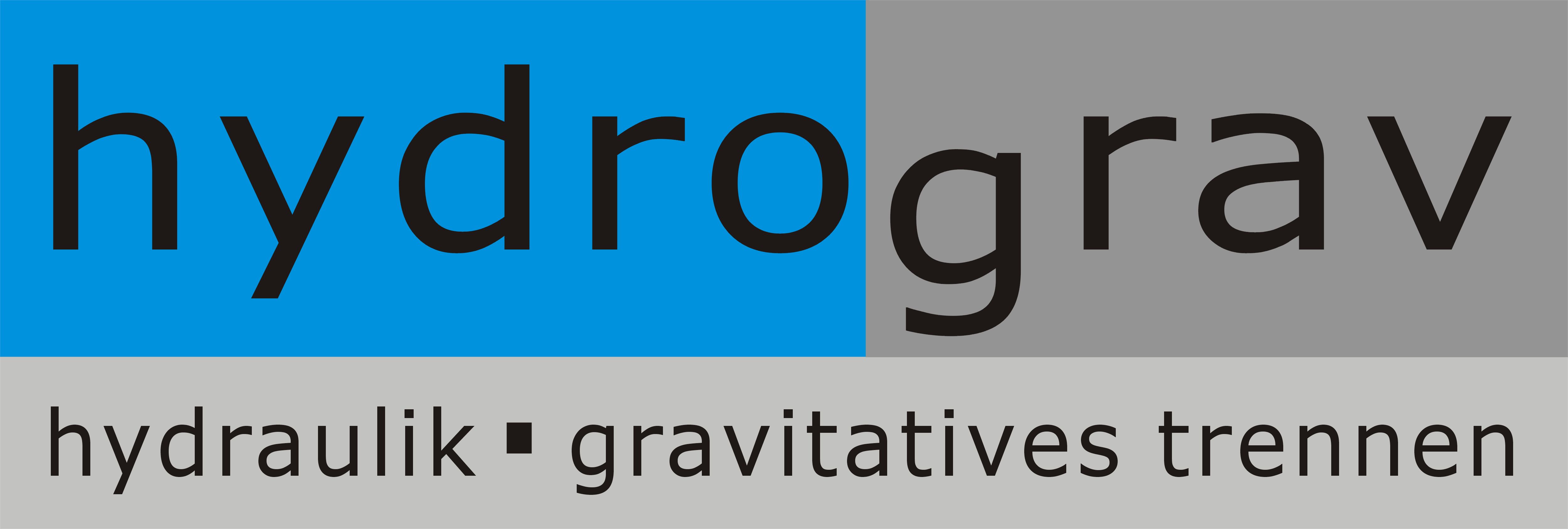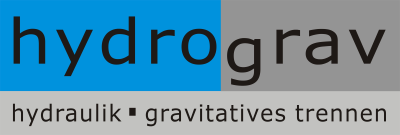HYDROGRAV ADAPT-CONSTRUCTIONS
Cologne-Weiden
„Install it, turn it on, it works. A fine thing with impressive effect and operational stability.“ – Horst Junge, former head of the wastewater treatment plant Cologne-Weiden, prototype hydrograv adapt, in operation since 2007.
hydrograv adapt ensures a working flocculation filtration already in the secondary clarification at any load. And with manageable technical effort, with slight energy requirement and low-maintenance. In addition, so the capacity of the secondary settling tanks is increased.
Sludge overflow and flock output – for all the progress of the wastewater technology, this is still a major problem in many wastewater treatment plants. Yet this leads to
- unnecessary environmental pollution,
- high wastewater charges and
- exceedance of the discharge limits.
It is known that secondary settling tanks have very good discharge values when the sludge is introduced into the tank below the sludge level. Then the flock filter works – and that is as effective as the expensive and energy-intensive downstream technical filters. hydrograv adapt exploits this flock filter always consistently with its height-variability.
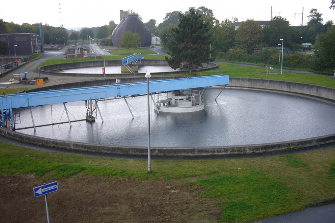
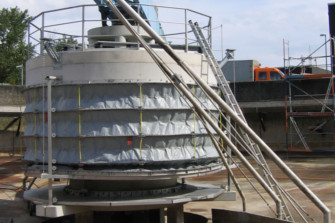
In September 2007, the first hydrograv adapt inlet structure was put into operation in a secondary settling tank at the wastewater treatment plant Cologne-Weiden. The second secondary settling tank of this wastewater treatment plant is equipped with a conventional fixed inlet structure. A comparison of the operating results of both tanks is advisable.
A tank equipped with hydrograv adapt consistently shows better results:
- significantly lower sludge level, especially in rainy weather; i.e. higher security against sludge overflow or a higher hydraulic capacity as well,
- smaller filterable substances and considerably less visible fine flocks in the discharge,
- greater visibility depth (i.e. clear water),
- significantly lower floating sludge formation.
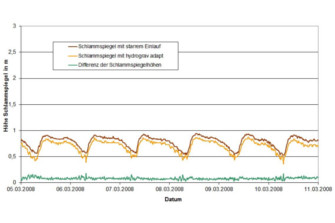
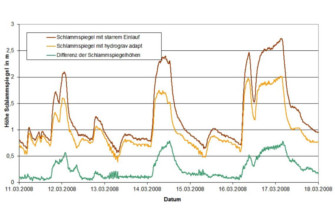 Picture: Comparison of sludge level positions in the two secondary settling tanks of the WWTP Cologne-Weiden, on the left a dry weather period, on the right a rain period. Difference of the sludge blanket layers are up to 80 cm.
Picture: Comparison of sludge level positions in the two secondary settling tanks of the WWTP Cologne-Weiden, on the left a dry weather period, on the right a rain period. Difference of the sludge blanket layers are up to 80 cm.
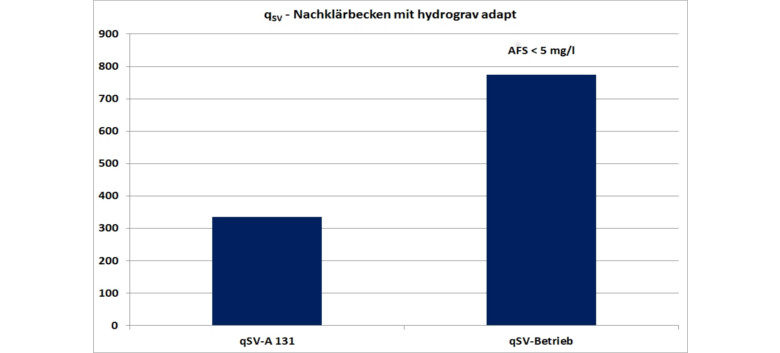 Picture: qSV charges of 230 % of the permitted limit according to DWA-A 131 could be treated reliably in the hydrograv adapt tank. qA = 2 m/h.
Picture: qSV charges of 230 % of the permitted limit according to DWA-A 131 could be treated reliably in the hydrograv adapt tank. qA = 2 m/h.
Higher reliable secondary settling tanks enable lower combined sewer overflows in the catchment area, and even that is active water protection, because:
- Connecting new catchment areas without the need to build a new secondary settling tank.
- Relieve less wastewater uncleaned – more mixed water through the wastewater plant.
- Forgo a bypass around the activation – or activate it only at much higher loads.
- Using released secondary settling tanks for other process steps such as the trace substance elimination.
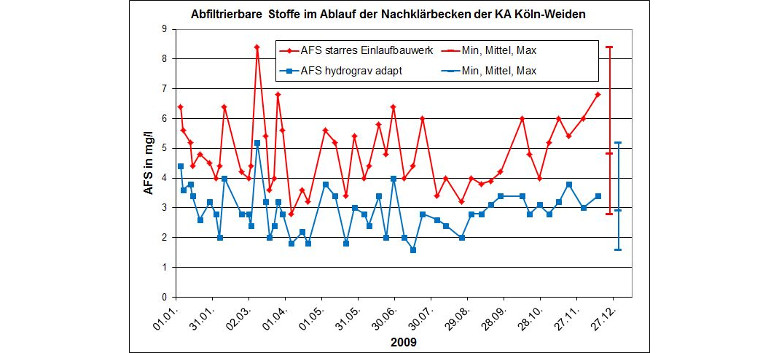 Picture: Comparison of filterable substance values in the discharge of the two secondary settling tanks of the wastewater treatment plant Cologne-Weiden. Continuously lower filterable substance values of hydrograv adapt tanks on average and in the tips.
Picture: Comparison of filterable substance values in the discharge of the two secondary settling tanks of the wastewater treatment plant Cologne-Weiden. Continuously lower filterable substance values of hydrograv adapt tanks on average and in the tips.
